What's Inside
Why another book on pregnancy?
"My purpose in writing The Australian Pregnant Book is to provide mothers-to-be with sound information from an Obstetrician's point of view on how to maximise the chances of having a successful pregnancy and outcome for mother and baby.
As a practicing Obstetrician and Gynaecologist, who has personally delivered over 6,000 babies during a 30 year career, I have been asked time and again the same questions, and observed many of the same anxieties, fears and concerns of women before conceiving, during pregnancy, labour and after birth.
The Australian Pregnant Book aims to provide sound and concise information on pregnancy from an Obstetrician's point of view. I am confident this book will reduce the anxieties, fears and concerns of the modern pregnant woman.
Preparation for pregnancy, the importance of diet, having an exact due date for delivery, the assessment of the intrauterine growth of your baby, the weight of your baby at birth and management of labour and delivery are some of the highlights in The Australian Pregnant Book, along with answers to frequently asked questions. Common problems that can be experienced after birth, including postnatal depression are also discussed. I have included over 100 colour illustrations to support the explanations."
- Dr Derrick Thompson
Not sure how to prepare for pregnancy? Or not sure which one of the number of pregnancy books to get advice from?
The Australian Pregnant Book provides detailed, easy to follow explanations of what you should do to prepare for pregnancy and delivery. The book covers important issues such as recommended pre-pregnancy screening tests, details of a well-balanced diet, vitamin supplements, caffeine and alcohol intake, pap smear and related abnormalities and why it is important to have a detailed medical history when you visit your doctor.
It not only explains what a balanced diet is but also explains the many benefits for having a healthy well-balanced diet when preparing for pregnancy and maintaining it during your pregnancy.
For example the benefits are:
- Reduced risk of a fetal abnormality
- Reduced risk of miscarriage
- Less likelihood to have excessive weight gain
- Reduced risk of premature labour
- Reduced chance of developing high blood pressure, pre-eclampsia or diabetes
- Reduced risk of placental abruption
- Less chance that your baby will suffer from placental insufficiency, which can result in poor fetal growth.
Sample content from The Australian Pregnant Book
Some samples of the types of experienced medical advice that can be found in Dr Thompson's beautifully-illustrated 320-page book can be found below:
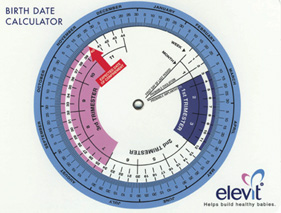
Determining your due date
When you are planning to become pregnant, it is most important to document the first day of each menstrual period. Following confirmation of pregnancy and you noting the first day of your last menstrual period, you can use the pregnancy birth date calculator (which is included in every copy of The Australian Pregnant Book) to determine your due date. The pregnancy calculator wheel also enables you to know the exact stage of pregnancy at any given time.
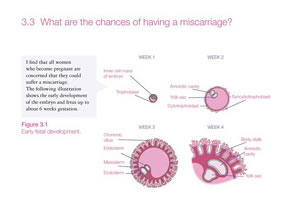
Side effects of early pregnancy
Chapter 3 includes tried and true methods for relief of morning sickness and other side effects related to pregnancy such as low abdominal and pelvic pain and vaginal spotting and bleeding in Management of a threatened miscarriage.
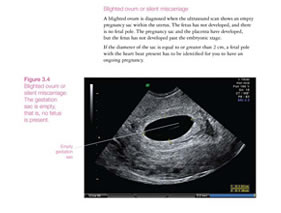
Management of a threatened miscarriage
Detailed explanations of the chances of having a miscarriage, the management of a threatened miscarriage, the management of inevitable miscarriage, and the management of an incomplete miscarriage.
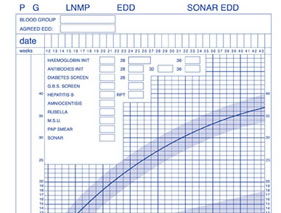
How to know if your baby is growing normally
The estimated weight of your baby may be an important factor when deciding whether you will need a caesarean section for the birth of your baby.
Chapter 4 provides information on how to monitor the progress of your pregnancy and provides indicators that show that your baby is growing normally. It instructs you on how to estimate your baby's weight at any point during pregnancy and your baby's weight at birth.
Included in every copy of The Australian Pregnant Book is your own Symphysis-Fundus Height (SFH) growth chart, which is an easy to use tool to help you monitor the growth of your baby in utero.
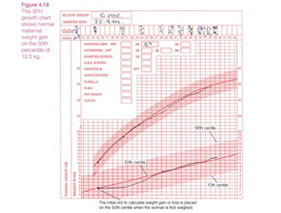
How to keep your weight under control during pregnancy
Excessive weight gain has been associated with pre-eclampsia and gestational diabetes. One of the many benefits of charting your weight gain, as advised in The Australian Pregnant Book is that it can alert your carer to the possibility of these problems (and others) developing. They may recommend more frequent antenatal checks, perhaps more rest, or you may need to adjust your diet.
Most women gain about 12 to 13 kg during their pregnancy or about 1.5 kg per month. However, it is not unusual for some women to gain 20 kg to 30 kg. You will feel better and have more energy during your pregnancy if you are not carrying excess weight.
Chapter 4 provides an easy to follow chart and advice on how to monitor your weight gain and chart your weight gain.
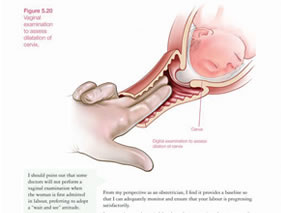
How to know when your labour has started
The only way to assess progress in labour is to perform a vaginal examination to see if the cervix is dilating
Chapter 5 covers in depth insights into labour and childbirth, accompanied by outstanding original colour illustrations showing the different fetal positions, engagement of the fetal head, breech presentation, the process of induction of labour and rupture of membranes. All illustrations are supported with excellent medical explanations which are easy to read and understand.
To better understand the process of labour, the place of epidural anaesthesia and the indications for episiotomy, instrumental birth (forceps/vacuum) and caesarean section, purchase The Australian Pregnant Book on-line TODAY.
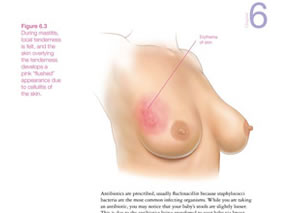
Common problems experienced after birth (the postnatal period)
- Possible post-delivery complications
- Breastfeeding
- Constipation
- Varicose veins
- Haemorrhoids
- Ankle swelling
- Urinary tract infection
- Wound infection following a caesarean sectionAnd much more.
Depression is one of the most common problems of pregnancy. The Australian Pregnant Book provides important information on perinatal and postnatal depression. Every copy of The Australian Pregnant Book includes a self-assessment test for postnatal depression - The Edinburgh Postnatal Depression Scale - to see if you are at risk of this complication.
